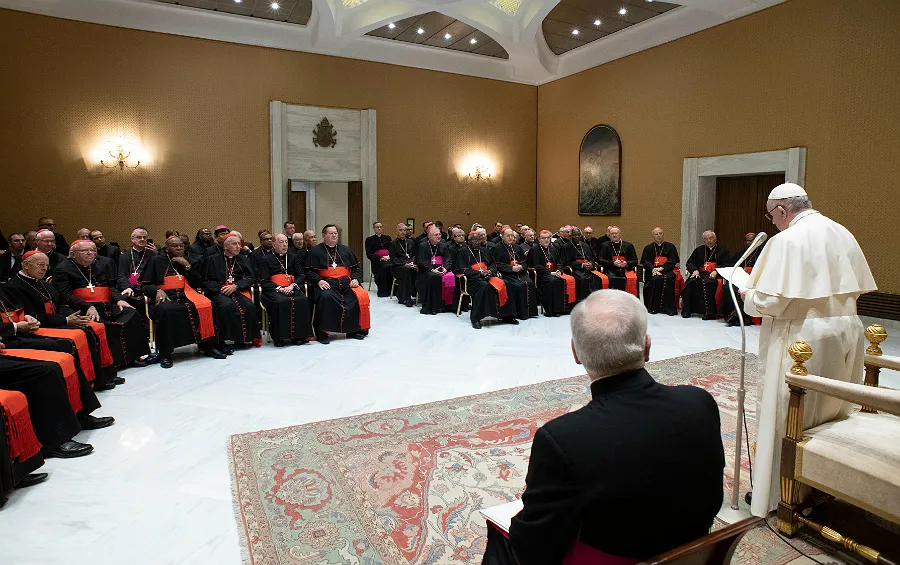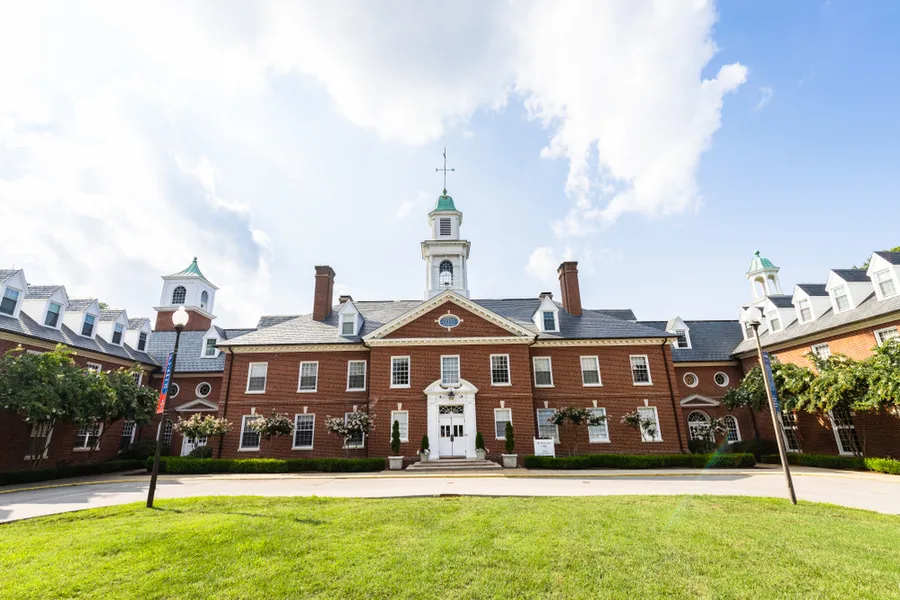
Washington D.C., Feb 14, 2019 / 03:26 am (CNA).- Imagine being woken up in the middle of the night by a dark figure in your room. He presses a gun to your head and demands that you get up. You and your family are dragged out of bed and led to a mining field, where you are forced to dig for hours on end.
They may be the proverbial “girl’s best friend,” but diamonds are far from friendly for many of those involved in the mining process.
With abuses ranging from forced labor to the funding of child soldiers, many diamonds still carry the shadow of blood and conflict, even decades after the first attempts to address some of the more troubling practices in getting the stones from their rocky deposits to a glittering setting.
What – if anything – can Catholics do to counter the immense human cost still attached to some of these gems?
Plenty, according to Max Torres, director of management and professor at The Catholic University of America’s business school.
“In this economy, the consumer is king,” he told CNA. “The day that consumers want to get worked up over diamonds, this will stop, whatever abuse it is we’re trying to eradicate, it will stop.”
While there are many steps in the process and levels of moral responsibility from consumers to the diamond exporters themselves, Torres maintained that ordinary people can still work to change large-scale moral problems in the industry.
“Do not underestimate the power of the consumer to move supply-chain decisions throughout the economy,” he stressed.
Clear stones; Blood-red controversies
Despite the 2006 hit film “Blood Diamond,” starring Leonardo DiCaprio, many consumers are still unaware of the controversy surrounding the diamond industry. Meanwhile, the need for accountability and higher ethical standards is still sorely felt by many working to mine the precious gems.
In recent decades, the conversation surrounding diamond mining has focused on the so-called “blood diamonds” – those mined in conflict areas whose profits are used to fund the bloody war efforts. Also called “conflict diamonds,” these previous stones are most associated with the illicit industries backing of civil wars in Angola, Sierra Leone, the Ivory Coast, Democratic Republic of Congo, Republic of Congo, Central African Republic and Liberia.
These countries all now have, at least in theory, legitimate diamond mining industries subject to international standards.
The most well-known international standard, the Kimberley Process, was set up in 2003 following a United Nations resolution against the sale of blood diamonds, to ensure that any given shipment of diamonds does not finance rebel groups. Certified shipments of rough diamonds must be transported in tamper-resistant containers and must be accompanied by a government certificate verifying their compliance.
But many advocates say the process is inadequate at addressing the problems underlying the diamond industry. For starters, there is no guarantee beside the exporting government’s assurance that a given shipment of diamonds is, in fact, conflict-free. Issues of corruption and bribery surrounding some governments’ certification, and a lack of transparency has led some key groups to pull out of the process altogether.
The 2003 National Geographic special “Diamonds of War” found that despite the early efforts of the Kimberley Process to regulate the industry, illegal transactions at the time were still rampant in some areas. A Sierra Leone official said that some 60 percent of the diamonds exported from the country were smuggled rather than going through officially regulated channels. One expert in the documentary estimated that 20-40 percent of the global rough diamond trade at the time was done illicitly.
Another complaint about the Kimberley Process is that while it works to combat funding of conflicts, it does not deal with other issues in the diamond industry, including forced labor and violence against workers, substandard and exploitative working conditions, the use of child labor and environmental concerns.
These problems show that the current definition of “conflict-free” is “far too limited in scope,” said Jaimie Herrmann, director of marketing for Brilliant Earth, a San Francisco-based jeweler that focuses specifically on providing ethically-sourced diamonds, gemstones and metals.
What the Kimberley Process “doesn’t include is human rights abuses, violence, sexual abuses, and severe environmental degradation, as well as corruption,” Herrmann continued.
“For that reason, we go above and beyond the Kimberley Process’s definition of conflict free,” she said. Brilliant Earth gets its diamonds from select sources in Canada, Namibia, Botswana, South Africa and Russia. “We feel like those diamonds really do go above and beyond that guarantee and they are untainted by human rights abuses.”
The chance to establish a legitimate and ethical source of diamonds has also been an economic opportunity for some countries. In Botsawna, the government and DeBeers diamond company each own half of the Debswana mining company, and the nation has seen a rapidly growing economy and increasing economic freedom thanks in part to its booming mining industry and trusted industry standards.
Canada too has invested heavily in its mining infrastructure and increased production, quickly becoming a key diamond-producing country since the discovery of large diamond deposits in the 1990s.
Synthetic diamonds too offer promise for more ethically-produced diamonds, though currently the lab-produced stones comprise only two percent of the diamond gemstone market, with the remainder of the synthetic stones used in industrial settings.
The Ethics of Luxury and Necessity
Dr. Christopher Brugger, professor of moral theology at St. John Vianney Theological Seminary in Denver, Colorado, told CNA that in the diamond industry, as in any other work, Catholic social teaching instructs employers that “people come before profit.”
For businesses, he said, this means “pay employees a fair wage; respect the integrity of the marriages and families of employees; respect the faith of employees; permit labor to organize in socially constructive ways; work for fair access for all to goods and services necessary to living a dignified life.”
“Do producers who use their profits to fund conflicts or who use forced labor fulfill those duties?” he asked. “Emphatically no.”
Sustained abuses ranging from the funding of bloody conflicts to mining practices that exploit and demean workers not only fail to fulfill the moral duties of employers, Brugger said. The unjust practices also affirm that the high profits coupled with neglect for moral obligations have been “attracting scoundrels” to the industry.
But business leaders are not the only people with moral stakes in the diamond industry, he continued.
“It seems to me that morally conscientious people have an increasing responsibility to ‘shop ethically,’ i.e., to keep in mind where things come from, the conditions of those who supply things, the processes by which they are supplied,” Brugger suggested.
While it may not be possible to know the sourcing behind every product in every store, he said, it could be easier to find information on larger suppliers and specific industries.
Furthermore, he elaborated, there is a “greater responsibility on a person who is buying luxury items not to cooperate in the immoral actions of suppliers than there is on persons who are purchasing products for basic subsistence.”
“Ordinarily I do not need diamonds or chocolate,” Brugger said. “If we are dealing with luxuries, I think our obligations are still pretty strong to avoid purchasing from sources that do really bad things.”
“As one becomes aware of the ethical conditions surrounding an industry, one’s duty to factor that knowledge into one’s moral decision making becomes greater,” he added, noting that not everyone has the same access to the facts on abuses in a given industry.
“As knowledge of the ethical deficiencies become more widely known and the knowledge becomes easily available, our responsibility to use that knowledge in our shopping becomes greater,” he said. Knowledgeable customers should “inquire into the origins of the diamond they purchase; if shopkeepers are coy and not forthcoming about their sources, consumers ordinarily should look elsewhere.”
A Good Place to Start
Lack of information is “a big part of the problem,” according to Herrmann. She recommended that jewelers seek to trace the origin of their diamonds to countries and mines known for more ethical practices.
“Most jewelers know that their diamond is certified as conflict-free by the Kimberley Process, but do not know any more information about where their diamond is coming from,” she said.
Stephen Hilbert, a foreign policy adviser specializing in Africa and Global Development for the U.S. Conference of Catholic Bishops, seconded the suggestion that people looking at diamonds ask where they come from. He added that customers should also ask electronics dealers to check for conflict minerals, which face many of the same concerns as the diamond mining industry.
“Dealers may not be able to tell you whether their devices have been checked, but at least this raises the profile of the issue and this may trickle up,” he told CNA.
Consumer instance could be the force that leads to tighter standards and improved processes aimed at preventing abuse.
Still, Torres insisted, “no process is perfect.”
The Kimberley Process is a reputable starting point that could “be broadened and be brought more into line with human rights,” he said, and asking about the origin of diamonds “seems to be a rather painless method of at least garnering some amount of accountability.”
But in the end, the moral issues surrounding the industry are fundamentally a problem of human sin, which no process or regulations can erase.
“The only thing that can ensure moral behavior is the heart is human beings,” Torres said. Ultimately, “Jesus Christ is the answer.”
This article was originally published on CNA July 5, 2015.
 […]
[…]







